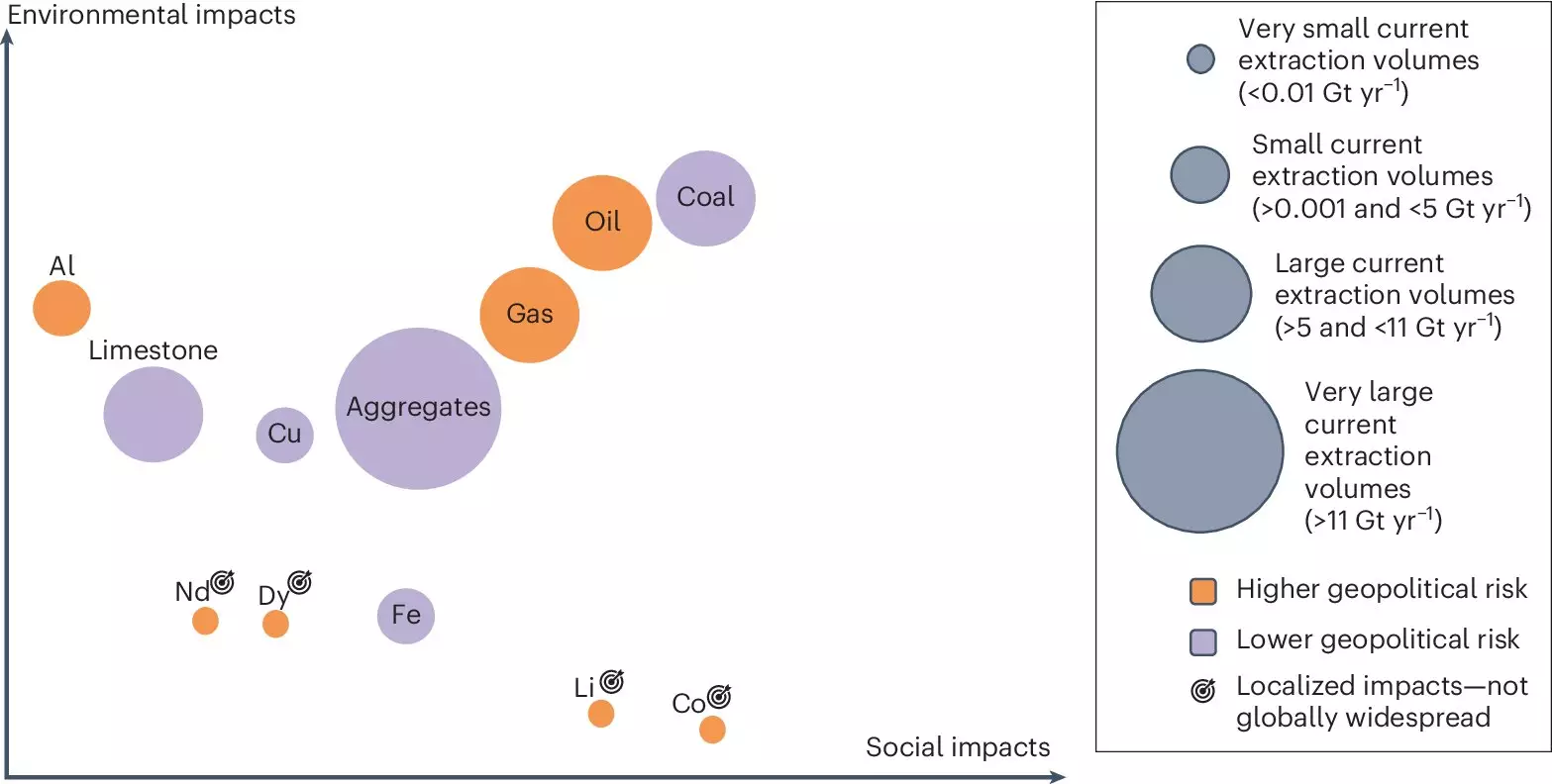The increasing demand for cobalt and lithium for e-car batteries, the necessity of copper, aluminum, and iron for a fossil-free power supply, and the essential need for rare earth elements for wind turbines all point towards a significant increase in material consumption by 2050. A new study conducted by the Berlin-based climate research institute MCC sheds light on the implications of this growing demand and highlights the potential risks associated with resource extraction and waste flows. The study emphasizes the importance of implementing demand-side climate solutions to mitigate these risks and ensure a sustainable transition to a low-carbon economy.
Decarbonization efforts may reduce the overall resource intensity of the global economy by phasing out coal, oil, and gas. However, the additional material requirements arising from the climate transition pose ecological and social risks at regional and local levels. The extraction of raw materials, land consumption, threats to biodiversity, water requirements, health hazards, and geopolitical dependencies are all factors that need to be considered in the transition to a sustainable economy.
Demand-side climate protection has gained traction as a means to achieve rapid greenhouse gas reduction and improve the quality of life. By promoting behavioral changes in mobility, housing, nutrition, and enhancing material circularity in the economy, demand-side solutions can help reduce material consumption and support a more sustainable transition. The study highlights the potential for reduced material demand in sectors such as transportation, construction, and food production through initiatives like pooled mobility, the use of natural construction materials, and reduced meat consumption.
A detailed risk analysis of each raw material reveals the challenges associated with their extraction and production. Political instability, environmental degradation, health hazards, and supply chain vulnerabilities are key risks that need to be addressed in the pursuit of a low-carbon economy. However, demand-side climate protection offers opportunities to make decarbonization more material-friendly by promoting sustainable practices in various sectors. Investments in infrastructure that enable climate-friendly behaviors and positive incentives for sustainable consumption are essential for achieving long-term environmental goals.
There is an urgent need for further interdisciplinary research to quantify and categorize the potential savings in materials through demand-side climate protection. Integrated Assessment Models that inform climate policy decisions must include the material dimension of a low-carbon economy to accurately assess the long-term impacts of climate policies. Updates to these models are necessary to ensure a comprehensive understanding of the relationships between climate policy, material consumption, and the transition to a carbon-free global economy.
The study underscores the critical role of demand-side climate solutions in reducing material consumption and mitigating the environmental and social risks associated with the climate transition. By implementing sustainable practices in various sectors and investing in infrastructure that supports climate-friendly behaviors, we can pave the way for a more sustainable future. It is imperative that governments, researchers, and industry stakeholders collaborate to address the challenges of material consumption and work towards a low-carbon, resource-efficient economy.


Leave a Reply